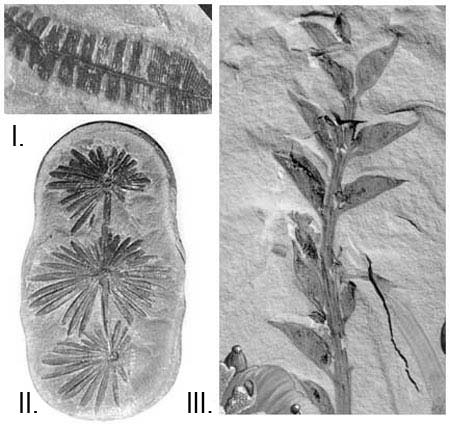Bigotry: The Dark Danger
Confessions of the Evolutionists

DOWNLOAD THE BOOK
CHAPTERS OF THE BOOK
- Introduction
- Chapter 1. Charles Darwin's Confessions Regarding His Theory
- Chapter 2. Evolutionists' Confessions Regarding Darwin
- Chapter 3. Evolutionists' Confessions Regarding the Invalidity of the Theory of Evolution
- Chapter 4. Evolutionists' Confessions Stating that They Espouse the Theory of Evolution for Ideological Reasons
- Chapter 5. Evolutionists' Confessions Stating that Natural Selection has No Evolutionary Power
- Chapter 6. Evolutionists' Confessions Stating that Mutations Have No Evolutionary Power
- Chapter 7. Evolutionists' Confessions Regarding the Dead-End of Molecular Evolution
- Chapter 8. Evolutionists' Confessions Regarding the Sudden Emergence of Life
- Chapter 9. Evolutionists' Confessions Regarding the Lack of Intermediate-Form Fossils
- Chapter 10. Evolutionists' Confessions Stating that There Is No Evidence of a Transition from Invertebrates to Vertebrates
- Chapter 11. Evolutionists' Confessions of the Impossibility of a Transition from Water to Dry Land
- Chapter 12. Evolutionists' Confessions of the Impossibility of Reptiles Evolving into Birds
- Chapter 13. Evolutionists' Confessions Stating That the Theory of Evolution Cannot Account for the Origin of Mammals
- Chapter 14. Evolutionists' Confessions Regarding the Invalidity of the "Horse Series"
- Chapter 15. Evolutionists' Confessions Regarding the So-Called Forebears of Man
- Chapter 16. Evolutionists' Confessions Stating that the Human Soul cannot Be Explained in Terms of Evolution
- Chapter 17. Evolutionists' Confessions Stating that Complex Organs cannot Appear by Way of Evolution
- Chapter 18. Evolutionists' Confessions Stating that the Theory of Evolution cannot Explain Animal Instincts
- Chapter 19. Evolutionists' Confessions Stating that Plants Cannot have Arisen by Way of Evolution
- Chapter 20. Evolutionists' Confessions Regarding Variations
- Chapter 21. Evolutionists' Confessions Stating the Non-existence of Vestigial Organs
- Chapter 22. Evolutionists' Confessions Regarding the Invalidity of the Claims of Homology
- Chapter 23. Evolutionists' Confessions Stating that the Evolution Theory Violates the Second Law of Thermodynamics
- Chapter 24. Evolutionists' Confessions Regarding the Invalidity of the Theory of Recapitulation
- Chapter 25. Evolutionists' Confessions Stating that Life Can Only Have Been Created
- Chapter 26. Materialists' Confessions Stating that the Universe Has a Beginning
- Chapter 27. Evolutionists' Confessions Stating that the Order in the Universe Cannot Have Come about by Chance
- Chapter 28. Evolutionists' Confessions Regarding Darwinism's Negative Effect on Moral Values
- Conclusion
< <
20 / total: 30
Chapter 19. Evolutionists' Confessions Stating that Plants cannot have Arisen by Way of EvolutionThe theory of evolution is at another complete loss to explain the emergence of plants, just as it in with its claims regarding human and animal evolution. Not a single fossil indicates that one plant species was the forerunner of another or else constituted an intermediate form between two species. A great many plant fossils have been unearthed to date, and all share one particular feature: they all are flawless and bear an identical resemblance to their counterparts today. For example, algae-which evolutionists describe as primitive cells and claim to be the ancestors of all "higher" plants-are known to be have been the same billions of years ago, just as they are today. It is also impossible to account for the emergence of the photosynthesis produced by plants in terms of chance. Photosynthesis, which we are unable to duplicate even using modern ,technology, and which we can little understand , has been successfully achieved even by the very algae that evolutionists regard as the most "primitive" of plants, for billions of years. All these are signs that botany disproves evolution and corroborates creation. As always, however, evolutionists cannot admit to this manifest reality: Chester Arthur Arnold is professor emeritus of botany at The University of Michigan:
Dr. Eldred Corner is professor of botany at Cambridge University:
Edmund J. Ambrose, is emeritus professor at the University of London and head of the Department of Cell Biology at the Chester Beatty Research Institute at the University of London:
From Science News:
Prof. Ali Demirsoy:
Hoimar Von Ditfurth:
B. G. Ranganathan:
Daniel Axelrod is professor of geology and botany at the University of California:
N. F. Hughes is an author on paleobiology and paleobotany:
Footnotes379- Chester A. Arnold, An Introduction to Paleobotany, New York: Mc Graw-Hill, 1947, p. 7. 380- Ibid. 381- Ibid., p. 334. 382- Ibid. 383- Dr. Eldred Corner, Evolution in Contemporary Botanical Thought, Chicago: Quadrangle Books, 1961, p. 97. 384- Edmund J. Ambrose, The Nature and Origin of the Biological World, John Wiley & Sons, 1982, p. 164. 385- "Ancient Alga Fossil Most Complex Yet," Science News, Vol. 108, September 20 1975, p. 181. 386- Prof. Dr. Ali Demirsoy, Kalitim ve Evrim ["Inheritance and Evolution"], p. 8. 387- Hoimar Von Ditfurth, Dinozorların Sessiz Gecesi 2 ["The Silent Night of the Dinosaurs 2"], pp. 60-61. 388- Ranganathan, B.G. Origins?, Carlisle, PA: The Banner of Truth Trust, 1988, p.20. 389- Daniel Axelrod, "The Evolution of Flowering Plants," in The Evolution Life, 1959, pp. 264-274. 390- N. F. Hughes, Paleology of Angiosperm Origins: Problems of Mesozoic Seed-Plant Evolution, Cambridge: Cambridge University Press, , 1976, pp. 1-2.
|
20 / total 30
You can read Harun Yahya's book Confessions of the Evolutionists online, share it on social networks such as Facebook and Twitter, download it to your computer, use it in your homework and theses, and publish, copy or reproduce it on your own web sites or blogs without paying any copyright fee, so long as you acknowledge this site as the reference.

